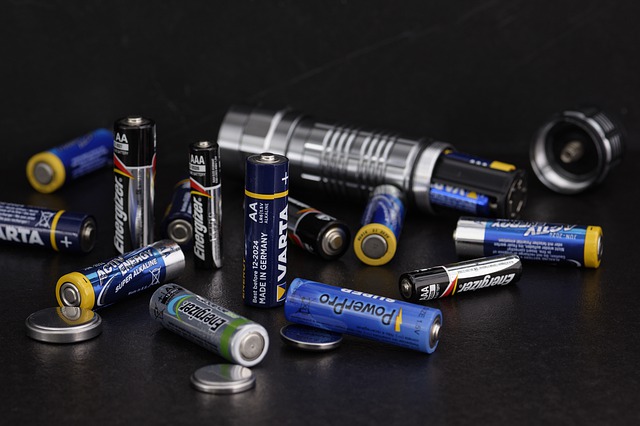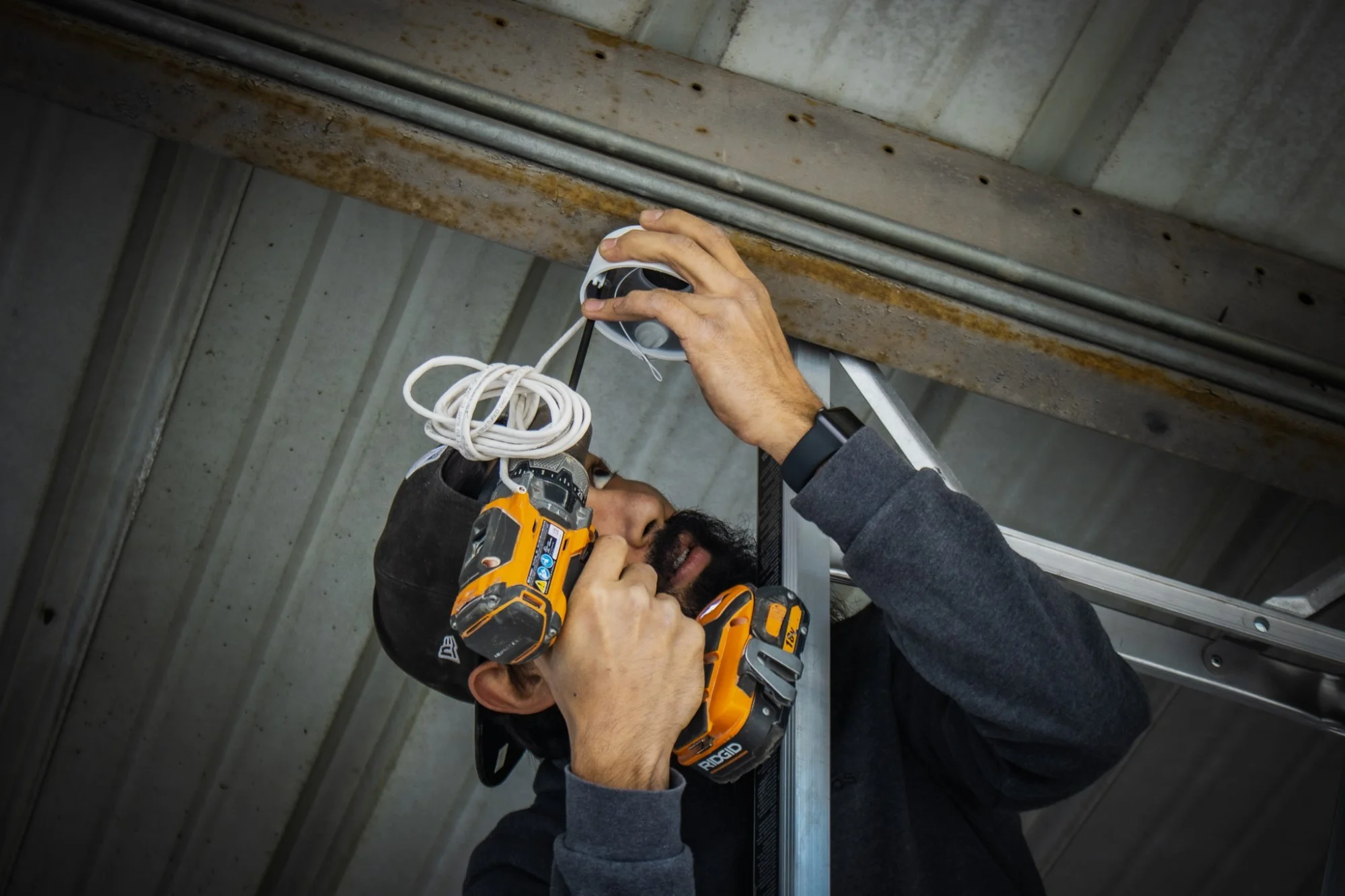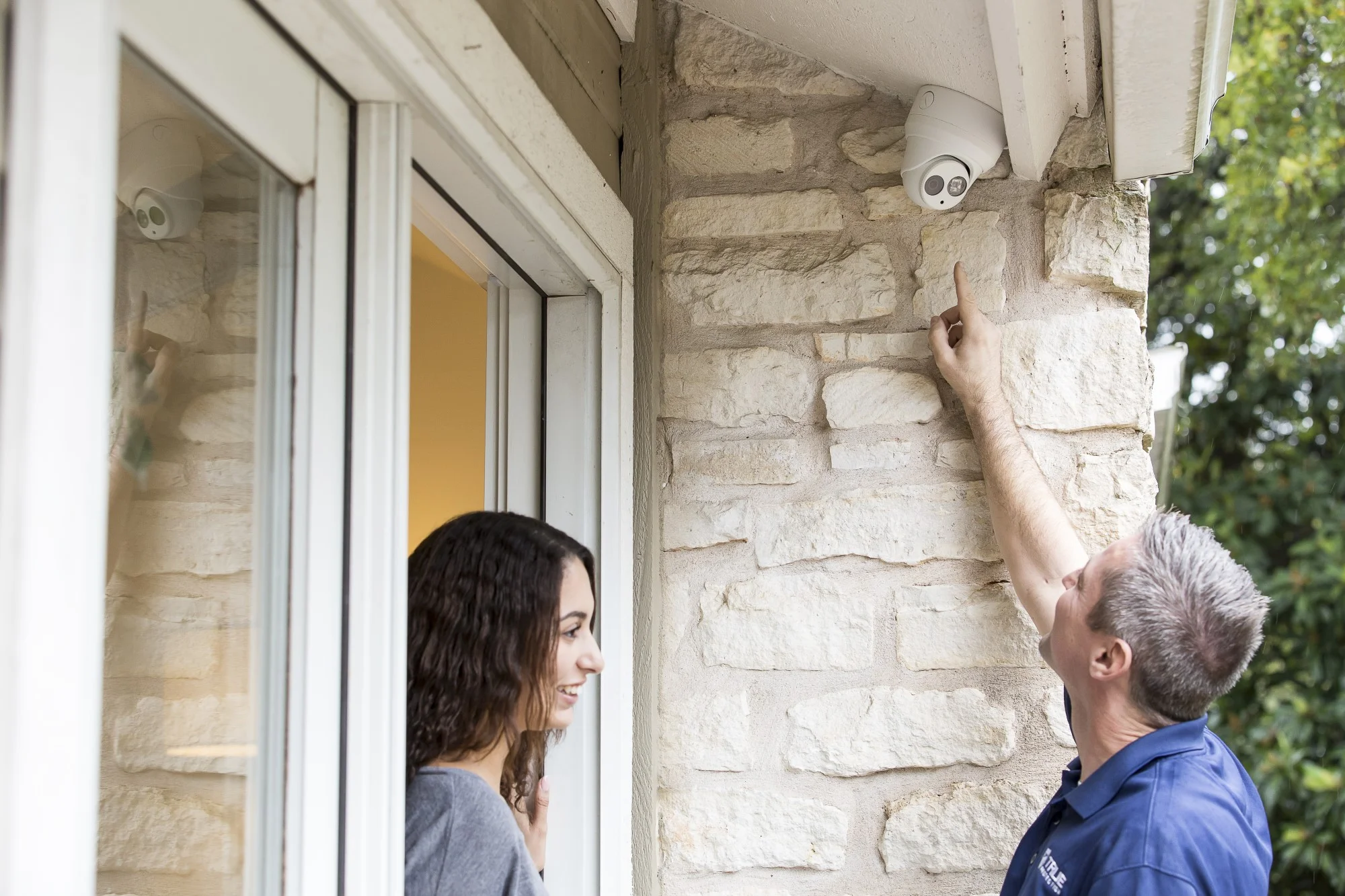- Introduction to Wireless Security Cameras and Power Requirements
- Types of Power Sources for Wireless Security Cameras
- Battery-Powered Wireless Security Cameras
- Solar-Powered Wireless Security Cameras
- Plug-In Wireless Security Cameras
- Energy Efficiency and Power Consumption in Wireless Security Cameras
- Installation and Maintenance Considerations
- Future Trends in Wireless Security Camera Power Technologies
Introduction to Wireless Security Cameras and Power Requirements
Wireless security cameras have become increasingly popular for both residential and commercial security solutions. Their primary advantage lies in the fact that they do not require wired connections for either power or data transmission, offering greater flexibility in placement and installation.
The core functionality of wireless security cameras revolves around their ability to transmit data through Wi-Fi, cellular networks, or proprietary wireless systems. However, an essential aspect of these devices is their power source. Without a dependable power source, a wireless security camera cannot operate effectively.
The power requirements of wireless security cameras can vary based on usage, features, and connectivity. Generally, these cameras are designed to consume low power while maintaining sufficient operational capabilities to capture and transmit video footage.
Attributes such as resolution, frame rate, night vision capabilities, motion detection, and additional features like audio recording and cloud storage accessibility all impact the power consumption of wireless security cameras. Higher resolution and frame rate typically result in higher power requirements, while advanced features like night vision and motion detection necessitate a consistent and reliable power source to function optimally.
In summary, understanding the power requirements and options available for wireless security cameras is essential for selecting the right system for your security needs. The subsequent chapters will delve deeper into the different types of power sources and their specific advantages and considerations.

Types of Power Sources for Wireless Security Cameras
Wireless security cameras rely on various power sources to operate effectively. These power sources are tailored to meet different use cases, ranging from ease of installation to ensuring uninterrupted power supply. Below, we examine the primary types of power sources available for wireless security cameras.
Battery-Powered
Battery-powered wireless security cameras are designed for flexibility and are suitable for locations where access to electrical outlets is limited. These cameras typically use rechargeable lithium-ion batteries, which need to be charged periodically based on their usage.
| Advantages | Disadvantages |
|---|---|
| Easy installation | Requires regular battery replacement or recharging |
| Portable and flexible placement | Potential downtime during battery changes |
Solar-Powered
Solar-powered wireless security cameras incorporate solar panels to harness energy from the sun, reducing the need for manual recharging. This type of power source is particularly beneficial in remote areas.
| Advantages | Disadvantages |
|---|---|
| Sustainable and environmentally friendly | Dependent on weather conditions |
| Low maintenance | Higher initial setup cost |
Plug-In
Plug-in wireless security cameras are connected directly to an electrical outlet via power adapters. This method ensures a continuous power supply, making it ideal for high-traffic areas requiring round-the-clock surveillance.
| Advantages | Disadvantages |
|---|---|
| Uninterrupted power supply | Limited by proximity to electrical outlets |
| Ideal for continuous use | More complex installation process |
Hybrid Systems
Some wireless security cameras use a combination of power sources, such as combining solar power with battery backup. These systems aim to provide greater reliability by leveraging the strengths of multiple power sources.
- Semi-Independent: These systems can switch between power sources based on availability.
- Enhanced Reliability: Reduces the risk of power outages affecting camera functionality.
Understanding the various types of power sources available for wireless security cameras can help users make informed decisions based on their specific needs and environmental conditions.

Battery-Powered Wireless Security Cameras
Battery-powered wireless security cameras are a popular choice due to their flexibility and ease of installation. This type of camera operates independently of hard-wired power sources, making it suitable for locations where running power cables is impractical or impossible.
Types of Batteries Used
These cameras typically use one of the following types of batteries:
- Disposable Batteries: Common types include AA or AAA alkaline batteries. They need to be replaced periodically, usually every few months depending on usage.
- Rechargeable Batteries: These are lithium-ion batteries that can be recharged multiple times. They provide a longer lifespan and are often integrated into the camera design for easier recharging.
Battery Life and Factors Affecting It
The battery life of a wireless security camera can vary widely based on several factors:
- Usage Patterns: Frequent motion detection and recording will drain the battery faster.
- Camera Features: Features like night vision, high-resolution video recording, and two-way audio consume more power.
- Environmental Conditions: Extreme temperatures can affect battery performance and longevity.
On average, battery-powered cameras can last anywhere from a few weeks to several months on a single charge depending on these variables.
Recharging and Replacement
Rechargeable battery-powered cameras often come with convenient recharging options:
- Direct Charging: The camera may have a built-in port for connecting to a power source via a USB cable.
- Removable Batteries: Some models allow users to remove the battery and charge it separately, enabling continuous operation with a spare battery.
For models that use disposable batteries, users will need to keep a supply of replacement batteries on hand to ensure uninterrupted operation.
Pros and Cons
Battery-powered wireless security cameras offer several advantages:
- Ease of Installation: No need for electrical wiring simplifies setup.
- Portability: Easily relocated as needed.
- Flexibility: Can be placed in remote or difficult-to-wire areas.
However, they also have some drawbacks:
- Maintenance: Requires regular battery recharging or replacement.
- Potential Downtime: If the battery depletes, the camera will stop functioning until recharged or replaced.
Conclusion
Battery-powered wireless security cameras provide an effective and flexible solution for a variety of surveillance needs, particularly in locations where wired power sources are not feasible. Understanding the types of batteries, factors affecting battery life, and the maintenance involved can help users make informed decisions about the suitability of these cameras for their specific requirements.
Solar-Powered Wireless Security Cameras
Solar-powered wireless security cameras are an environmentally friendly and cost-effective option for surveillance. These cameras harness solar energy to function, reducing the need for traditional power sources such as batteries or direct electrical connections. Solar panels attached to the cameras collect sunlight, converting it into electrical energy that is stored in onboard batteries for continuous operation.
Advantages of Solar-Powered Wireless Security Cameras
- Sustainability: Solar-powered cameras utilize renewable energy sources, making them an eco-friendly option.
- Lower Operating Costs: By reducing reliance on grid electricity, operational costs are minimized.
- Remote Capabilities: These cameras can be installed in locations without direct access to electrical power.
- Backup Power: In case of power outages, solar-powered batteries can keep the cameras operational.
Challenges of Solar-Powered Wireless Security Cameras
- Weather Dependence: Solar panels rely on sunlight, meaning performance may be reduced on cloudy or rainy days.
- Initial Cost: Solar-powered setups can be more expensive initially due to the cost of solar panels and installation.
- Maintenance: Solar panels need regular cleaning and maintenance to ensure optimal functionality.
Despite these challenges, solar-powered security cameras are gaining popularity due to their sustainable approach and operational benefits. The key components and their typical specifications are outlined in the following table:
| Component | Description |
|---|---|
| Solar Panel | Converts sunlight into electricity; typical power output ranges from 2W to 5W for security camera use. |
| Battery | Stores electricity generated by the solar panel; commonly lithium-ion batteries with capacities from 5200mAh to 10400mAh. |
| Controller | Regulates the power flow between the solar panel, battery, and camera, ensuring balanced operation. |
| Camera | Surveillance device typically equipped with features such as motion detection, night vision, and wi-fi connectivity. |
For optimal efficiency, solar-powered cameras should be positioned to maximize sun exposure and equipped with battery backups to ensure continuous operation during periods of low sunlight. Proper installation and maintenance can help mitigate some of the challenges, making solar-powered wireless security cameras a viable option for both residential and commercial use.
DC Powered Security Cameras

Plug-in wireless security cameras use a continuous power supply from a wall outlet, making them a reliable option for long-term and consistent monitoring. Unlike battery-powered or solar-powered cameras, plug-in models do not rely on rechargeable batteries or sunlight, which can fluctuate and potentially lead to power outages or reduced functionality.
Benefits of Powered Security Cameras
There are several advantages to using plug-in wireless security cameras:
- Consistent Power Supply: The primary benefit is the constant power source, ensuring that the camera remains operational 24/7 without the need for periodic recharging or battery replacement.
- Higher Performance: Continuous power allows for higher resolution video, longer recording times, and additional features like advanced motion detection, night vision, and real-time alerts without draining a battery.
- Lower Maintenance: These cameras require minimal maintenance as there is no need to regularly check or replace batteries. This can be particularly advantageous in hard-to-reach locations.
Drawbacks of Plug-In Wireless Security Cameras
Despite the benefits, there are a few drawbacks to consider:
- Dependence on Power Outlet: The necessity of a power outlet can limit camera placement options. Users may need to ensure proximity to an electrical socket or potentially use extension cords, which can be unsightly or pose a tripping hazard.
- Power Outage Vulnerability: In the event of a power outage, plug-in cameras will cease to function unless connected to a backup power source such as a UPS (Uninterruptible Power Supply).
- Installation Limitations: Installing plug-in cameras may require drilling holes and managing cables, which could be challenging in certain environments or rental properties.
Applications and Use Cases
Plug-in wireless security cameras are suitable for various applications, including:
- Residential Monitoring: Ideal for home security, these cameras can be placed indoors or outdoors to monitor entrances, garages, and other key areas.
- Business Surveillance: Businesses can use plug-in cameras for monitoring offices, retail spaces, and warehouse areas, benefiting from features like continuous recording and real-time notifications.
- Public Spaces: Useful for monitoring public areas such as lobbies, parking lots, and campuses where continuous surveillance is necessary.
Overall, plug-in wireless security cameras provide a reliable and maintenance-free solution for continuous surveillance needs. However, users must consider the installation constraints and ensure backup plans for potential power outages to maintain uninterrupted security coverage.
Energy Efficiency and Power Consumption in Wireless Security Cameras
Wireless security cameras come with varying power needs based on their design and functionality, directly affecting their energy efficiency and power consumption. Understanding these aspects is crucial for optimizing the operation and sustainability of such devices.
Factors Affecting Power Consumption
Several factors influence the power consumption of wireless security cameras:
- Resolution and Frame Rate: Higher resolution cameras (e.g., 1080p or 4K) and those with higher frame rates consume more power due to the increased processing and data transmission requirements.
- Night Vision: Cameras with infrared LEDs for night vision require additional power, particularly when the night mode is activated.
- Motion Detection: Advanced motion detection features can increase power usage because of the additional processing needed to analyze video feeds continuously.
- Wireless Communication: The power needed for Wi-Fi or other wireless communication protocols varies depending on the strength of the signal and the frequency of data transmission.
Energy-Efficient Technologies
Manufacturers employ several technologies to enhance the energy efficiency of wireless security cameras:
- Low Power Modes: Many cameras feature standby or sleep modes that significantly reduce power consumption when the camera is not actively recording or transmitting data.
- Efficient Video Compression: Technologies such as H.264 or H.265 video compression reduce the amount of data that needs to be processed and transmitted, thereby lowering energy requirements.
- Optimized Firmware: Efficient firmware can optimize the camera’s operations to use minimal power without compromising performance.
- Advanced Battery Technologies: For battery-powered models, advancements in battery technology, such as the use of lithium-ion phosphate batteries, can provide longer operational times and require less frequent recharging.
Measuring Power Consumption
Power consumption in wireless security cameras is typically measured in watts (W), and for battery-powered models, capacity is measured in milliampere-hours (mAh) or watt-hours (Wh). A thorough understanding of these metrics is essential for evaluating and comparing energy efficiency.
Impact on Battery Life
The energy efficiency directly influences battery life. Cameras with optimized energy consumption will have longer intervals between charges, improving convenience and operational uptime. Conversely, high power consumption features can rapidly deplete the battery, necessitating more frequent recharges or replacements.
In summary, energy efficiency and power consumption are pivotal considerations for the operation of wireless security cameras. By understanding and optimizing these factors, users can enhance the performance and sustainability of their surveillance systems.
Installation and Maintenance Considerations

Installation and maintenance of wireless security cameras are crucial elements to ensure their effective operation and longevity. When working with leading providers like True Protection, understanding the nuances of setting up and maintaining these systems can make a significant difference. Below are some key considerations:
1. Location Selection
Choosing the right location for your wireless security cameras is paramount. Areas with high traffic or vulnerable entry points should be prioritized. True Protection’s team of local experts can assist in identifying these optimal spots in your home or business in Austin, San Antonio, Houston, Dallas/Fort Worth, and other locations they serve.
2. Power Source Accessibility
Ensuring that your camera is near an accessible power source is essential for continuous operation. Battery-powered cameras need easy access for battery replacement, while plug-in cameras require a nearby electrical outlet. Solar-powered cameras should be installed in locations that receive ample sunlight.
3. Connectivity and Signal Strength
Reliable network connectivity is critical for the effective functioning of wireless security cameras. It’s essential to ensure that your camera is within the range of your Wi-Fi network. This is another area where True Protection’s expertise can be invaluable, as they can help you optimize your network for maximum coverage.
4. Weatherproofing and Durability
Consider the environmental conditions where the cameras will be installed. Cameras exposed to the elements should be weatherproof and rugged enough to withstand harsh conditions. True Protection offers products that are designed to endure various climates found in Texas.
5. Regular Maintenance
Regular maintenance is required to ensure the ongoing reliability of your security cameras. This includes cleaning the lenses, checking for firmware updates, and ensuring that batteries (if applicable) are charged or replaced timely. True Protection provides maintenance support as part of their comprehensive service offerings.
6. Professional Installation vs. DIY
While some wireless security cameras are easy to install and maintain on your own, others might require professional installation to ensure optimal performance. True Protection offers professional installation services to mitigate any potential issues, ensuring that your security system is set up correctly and efficiently.
In summary, careful consideration of installation and maintenance aspects can significantly enhance the effectiveness and longevity of wireless security cameras. With the expertise and support from a trusted provider like True Protection, you can ensure that your security system meets your specific needs and operates seamlessly.
Future Trends in Wireless Security Camera Power Technologies
The landscape of wireless security camera power technologies is set to evolve significantly in the coming years. Technological advancements are driving the development of more efficient, sustainable, and smarter power solutions. Let’s look at some of the key future trends expected to shape wireless security camera power technologies.
Another trend is the development of longer-lasting and more efficient batteries. Innovations in battery technology, such as solid-state batteries, promise higher energy densities, faster charging times, and increased safety. These advancements could extend the operational life of battery-powered wireless security cameras significantly.
Wireless charging is another promising area of development. Efforts are underway to create efficient wireless power transfer systems that can continuously power security cameras without the need for physical connectors. This technology could simplify the installation and maintenance of wireless security cameras by eliminating the need for battery replacements or wired connections.
| Technology | Expected Benefits |
|---|---|
| Advanced Solar Cells | Higher efficiency, better performance in low-light conditions |
| Solid-State Batteries | Higher energy density, faster charging, increased safety |
| Wireless Charging | Eliminates physical connectors, continuous power supply |
| Smart Energy Management Systems | Optimized power usage, predictive energy adjustments |
| Quantum Dot Technology | Enhanced solar power efficiency |
| Energy-Harvesting Technologies | Supplementary power source, extended battery life |
Have questions or Need Help?
Overall, the future of wireless security camera power technologies is promising, with numerous innovations on the horizon. These advancements are expected to enhance the efficiency, reliability, and sustainability of wireless security cameras, addressing current challenges and opening up new possibilities for their deployment and use. So, if you have any questions or looking to get a security camera system installed, give us a call today.
